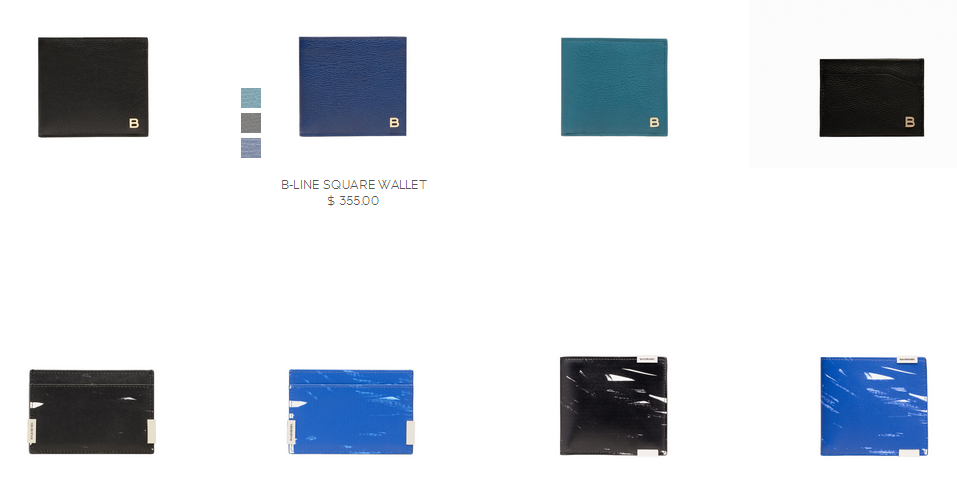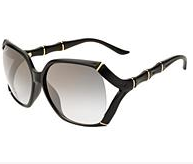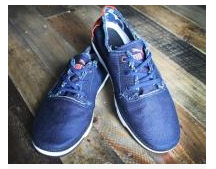Introduction
Kering is a leading global brand in the fashion industry. Its success traditionally hinged on acquiring and developing some of the most successful luxury brands in the world, including Gucci, Bottega Veneta, Yves Saint Laurent, and Puma (Evans 1). By utilizing the power of creativity and innovation, Kering subscribes to a philosophy that premises on allowing its brands to reach their full potential in the most sustainable way (Kering Group 1). Today, the company has a global market presence in more than 120 countries (Kering Group 1). It also rakes in annual revenues of more than €11.5 billion and its comprehensive employee pool is comprised of more than 38,000 employees (Kering Group 1). This paper provides a comprehensive retail analysis of the company’s merchandising strategy.
Current Fashion Trends
Ubiquity vs. Exclusivity
According to Deloitte (10-11), major luxury brands in the world have stuck to a traditional production process (in-house), which is characterized by the refusal to outsource their production process. In this regard, many luxury brands have tight control of most aspects of their business. However, the internet is slowly changing this dynamic as it has shifted the power from the major brands to their consumers. This change has led to the emergence of a new trend in the fashion industry, which is characterized by ubiquity versus exclusivity. Indeed, since the start of e-commerce, most luxury brands have shifted their merchandising strategies online.
Nowadays, e-commerce could account for more than 20% of a company’s sales (Evans 1). For example, Amazon’s success in the e-commerce space has seen its fashion business grow to $95 billion annually (Deloitte 10-11). It is also the company’s fastest-growing business segment. The e-commerce trend has also infiltrated Kering’s merchandising strategy because customers can easily buy most of the company’s products on the virtual platform. However, the company joined this trend late because it thought that replicating some of the unique properties of its brands on the online platform would be difficult (Evans 1).
This concern was not exclusive to Kering alone because Deloitte pointed out that “the potential loss of exclusivity and the prestige associated with luxury brands’ bricks and mortar locations are hurdles that can be difficult for luxury brands to overcome, but they are surmountable, and some brands have embraced the technology” (8). The shift to the online platform is unavoidable and Kering has realized this fact. However, Evans (1) cautions that this shift does not mean that luxury brands have an excuse not to deliver an interactive, exciting, and efficient shopping experience to their customers. Nonetheless, the move to avail products online is growing as more companies are resorting to using their websites to promote their brand stories, fashion shows, and the likes. Kering’s main luxury products are on this platform as well.
Omnichannel
The adoption of the omnichannel distribution and sales network is an emerging trend in the fashion industry, especially among leading global brands that major in the luxury brand segment (Deloitte 10-11). This distribution strategy is a cross-channel business model, which most companies use to increase their customers’ shopping experience. Kering has adopted the same strategy by offering its customers multiple channels to shop (Pinault 1-3). Particularly, it has chosen to merge it’s brick and mortar strategy with an online marketing strategy to provide its customers with both online and offline shopping experiences. The picture below shows some men’s accessories (wallets) that appear in the company’s online store and physical store in Australia.

The availability of these items offline and online demonstrates that Kering has adopted the omnichannel trend.
Globalization
Emerging markets have distinguished themselves as the new frontier markets for leading fashion companies, such as Kering. Asian markets are blazing the trail, while African markets provide a long-term growth plan for the same companies (Deloitte 10-11). Kering understands this fact by customizing its products to suit different market segments. For example, it has established different stores in many regions of the world, including Australia, major European cities, Africa, Middle East. East Asia, Japan, China, and the likes. A quick overview of the company’s website also reveals the same globalization strategy, as customers are required to state their countries when shopping. This way, they get to know the prices of their desired products in their local currencies and are informed of the physical location of their stores.
Merchandise Strategy Analysis
Although Kering is a conglomerate of different luxury brands, it offers little brand synergy, beyond the fact that it operates most of the websites for the individual luxury brands under its banner. The company encourages individual growth of the multiple brands and rarely imposes itself on the brand activities of its brand groups (Balenciaga 2). Nonetheless, an assessment of the company’s brand presentation shows that it is true to its luxury brand appeal. This finding emerges from its premium website, characterized by a black and silver color theme (Kering Group 1). Undoubtedly, it is difficult to ignore the superior brand appeal conveyed on this platform, particularly as some expensive fashion apparel and fancy holiday destinations appear on slides at the home page (Kering Group 1).
Company’s Financial Goals
Gucci is currently Kering’s strongest luxury brand accounting for close to 50% of the organization’s revenue (Pinault 1-3). Bottega Venetta is also another successful brand under the company’s brand portfolio, which accounts for a significant part of its success as well (Pinault 1-3). Yves Saint Laurent is also another brand that accounts for a significant portion of the company’s success. In fact, according to the company’s comparative market report for 2015 and 2016, this brand reported the highest level of market activity during the period (Kering Group 1). Kering’s sales plan has hinged on increasing the company’s sales growth. According to the company’s half-year financial report, it has managed to do so in most parts of the online business segments. For example, according to the company’s 2016 financial report, its luxury, sports, and lifestyle segments have reported a significant growth in the first half of 2016 (Kering Group 1). The first-half consolidated revenue was also up 5.5% and the recurring operating income was similarly up by 4.9% (Kering Group 1).
Current Season’s Sales Plan
Kering expects to meet its financial goals through different strategies relating to its different product categories. For example, it looks up to Gucci to sustain the positive financial performance through new creative impetus and strategic initiatives aimed at increasing the brand’s outreach and strengthening its current position. The company also looks up to Puma to drive most of its market growth in the sports and lifestyle segment (Kering Group 1). This brand category was the most vibrant in the 2015/2016 financial year (Kering Group 1). It also recognizes that its operating environment will continue to have uncertainty. To mitigate its effects, it hopes to maintain financial discipline and steadily implement its current strategy (Kering Group 1).
The company’s sales growth target aims to achieve higher same-store revenue growth than it did in 2015. The positive results depicted above are mostly representative of the company’s financial performance for the first half of 2016. To meet this goal, Kering depends on its market positioning strategy, which is premised on the fact that it has positioned itself in high-growth markets. The company also depends on its strong market fundamentals to meet this goal and sustain its future success. However, the dangers posed by its operating environment remain unchanged because, for a long time, this environment has been unsettled, from not only an economic perspective but also from a geopolitical and security perspective (Deloitte 10-11). Similarly, many factors are changing market trends, including consumer tastes and preferences. Against this backdrop, the company intends to use its resources efficiently to achieve its objectives.
General Direction of the Merchandise
The general direction of Kering focuses on promoting and developing sustainable brands. This direction appears in many expert analysis reports of the company (IF Innovation Forum 1). This strategic direction also appears in the company’s website, which reads, “Four years ago, we set ourselves a series of 2016 sustainability targets, pushing ourselves beyond our limits to drive our brands towards higher levels of economic, environmental, ethical and social performance” (Kering Group 6). Kering has made significant steps to make this brand direction a reality. For example, its new Saint Laurent Stores have incorporated the sustainability concept in their architecture. Originally designed in 2012, the company is building the store using renewable material and rich noble materials. Buoyed by the goal of achieving architectural clarity, this building is also set to convey a preference for simplicity, as opposed to elaborate decorations, which are synonymous with most luxury stores. The picture below shows a graphical representation of this store.

Broadly, through the infusion of the sustainability concept in its brick and mortar architecture, Kering aims to reduce the environmental impact of its operations (Kering Group 1). The same strategy has manifested in the design and production of its fashion and apparel. For example, it recently launched an innovative sunglasses model that infuses the concept of sustainability. It appears below

Its sports and lifestyle segment also promotes the same concept of sustainability as can be seen in the diagram below of Puma’s shoes, which were made using recyclable material

There are many more examples of Kering’s products, which demonstrate the direction towards sustainability. Indeed, most of them highlight the company’s commitment to pursue a direction that would safeguard the company’s future in the cutthroat fashion industry, but at the same time fulfill its social and environmental goals. The target market for this merchandising strategy is bound to receive this operational strategy well because most fashion consumers today are wary about the environmental impact of their purchases. More customers are also critical about the reputation of the companies they purchase their products from because they would not want to support the activities of an organization which is exploitative, or which does not pay close attention to the impact of its operations. Kering’s strategy to produce sustainable products and align its business expansion strategy with the same concept meets most of the ethical requirements customers look for among responsible global brands. In this regard, there is hope that its business strategy would work. This strategy aligns with other key strategies pursued by the business. The table below highlights a calendar report of the company’s merchandising strategy.
Merchandising Calendar
The general direction pursued by Kering has increased corporate social responsibility and the promotion of the company’s key brands. Promoting the sustainable concept also emerges as key them in the analysis of the company’s calendar. Details of this strategy have already been discussed in this paper.
Merchandising Analysis Table (Men’s Wallets)
- Item analysis in each category/class
- Color analysis in each category/class
- Size analysis in each category/class
- Price analysis in each category/class
Summary
This paper has outlined the key tenets of Kering’s retail strategy as representative of today’s fashion trends. An overview of the company’s merchandising strategy reveals that its main goal is to increase its sales growth through increased brand awareness and the increased protection of the company’s strong market fundamentals. Sustainability is also an inherent theme that will continue to underpin most of the company’s activities. By continuing to stick to this principle and ensuring the company’s strong fundamental prevail, Kering is set to meet most of its goals.
Works Cited
Balenciaga. Spring Summer Collection. 2016. Web.
Deloitte. Global Power of Luxury Goods. 2014. Web.
Evans, Katie. Kering offers a Luxurious Glimpse into Its Web Operations. 2015. Web.
IF Innovation Forum. How Brands Can Improve Apparel Value Chains. 2016. Web.
Kering Group.About Kering. 2012. Web.
Pinault, François-Henri.Kering’s CEO on Finding the Elusive Formula for Growing Acquired Brands. 2014. Web.




